
|
|
|
|||||||||
|
|
Thread Tools | Search this Thread |
|
|
#1 |
|
Regular Crew
Join Date: Jul 2007
Location: Ft Myers, Florida
Posts: 65
|
Green Screen Compositing - Making It Look Real
Hey all,
Does anyone know of some good books/DVDs/or courses that really get into lighting for, primarily, green screen compositing? I've been trying forever to find something really good on this, and have currently read Ron Brinkmann's book on Compositing. I do mostly shots of people in front of green screen. I try to set up the camera angles and lighting to match various pictures that I find from the web (usually from Google Images and the like). But it is VERY hard to get the final composite to look "real" unless the lighting is just perfect. One of the things that I find particularly difficult is simulating outdoor light (direct sunlight) in an indoor studio. My foreground always seems to have that stark, fake look to it in contrast with the background. I'm using Photoshop CS4 with The Primatte 3.0 plugin. I match the gamma levels and black point. Try adding grain, match colors, hues, saturation levels. Try blurring the BG to match the FG and vise versa. It's maddening! I've tried everything I can think of. If any can PLEASE offer me any help on this or point me in a right direction, I would very much appreciate it!!! |
|
|
|
|
|
#2 |
|
Inner Circle
Join Date: Oct 2001
Location: Honolulu, HI
Posts: 2,054
|
You're right -- you have to get the lighting to match exactly to make it look real.
That means the direction, quality and quantity of light has to match. Also, reflected light has to match. For example, if the subject is surrounded by blue sky, the shadows have to be filled in with a slightly blue light. Took me an hour of thoughtful consideration before I finally figured out that detail one day. Same if the subject is standing on grass, snow or a dark asphalt road. If there's a light source in the background then the foreground subject has to be affected by a light source, too. One way to do this would be to have a person standing in the frame for a few seconds when you shoot the background plate. Then when you set up the greenscreen, get all the various elements to match in the studio, too. And don't worry about a light being unflattering. If your background plate lit with harsh noonday sun, your model has to be lit the same way.
__________________
Dean Sensui Exec Producer, Hawaii Goes Fishing |
|
|
|
|
|
#3 |
|
Regular Crew
Join Date: Jul 2007
Location: Ft Myers, Florida
Posts: 65
|
Hey Dean thanks for the reply. You're right on that lighting issue. It does have to be about 99% exact or it just won't look right. My particular problem is that most of the background plates I used are not shots I've taken myself, so I have no specific camera data as to how they were shot, or the precise angle and elevation of the sun. I just have to take an image I find and "eyeball" it. For instance this image (which I used for the last composite):
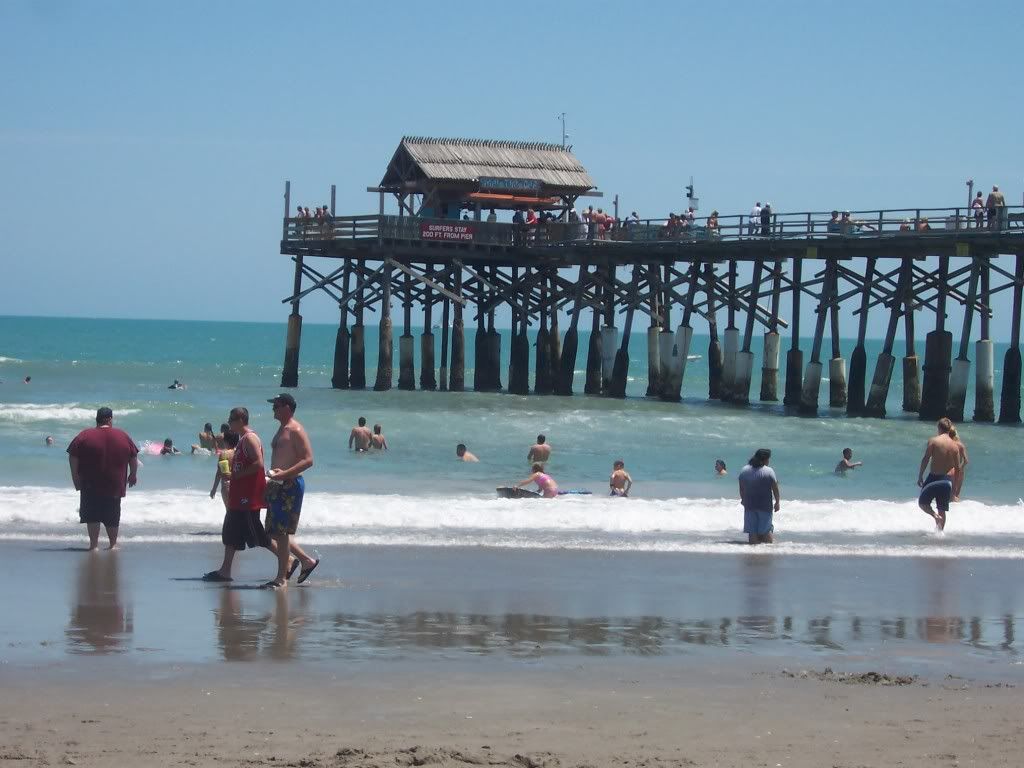 Drawing a line from the left tip of the shadows to the people's heads, the sun seems to coming from about 10-20 degrees to the right of top dead-center. Here is the original foreground as shot: 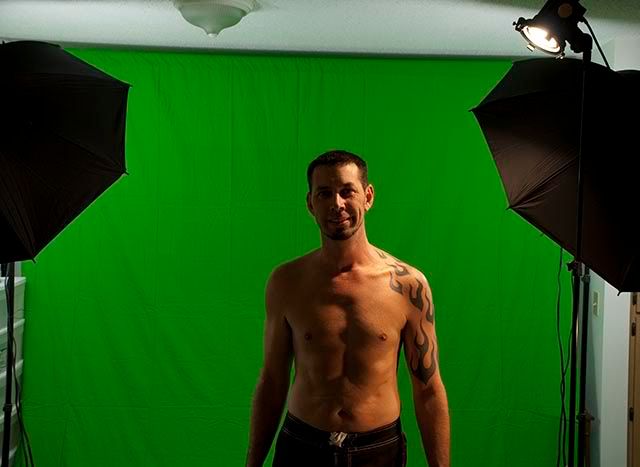 This is the foreground element with a slight amount of lighting correction applied (plus Light Wrap in Primatte 3.0): 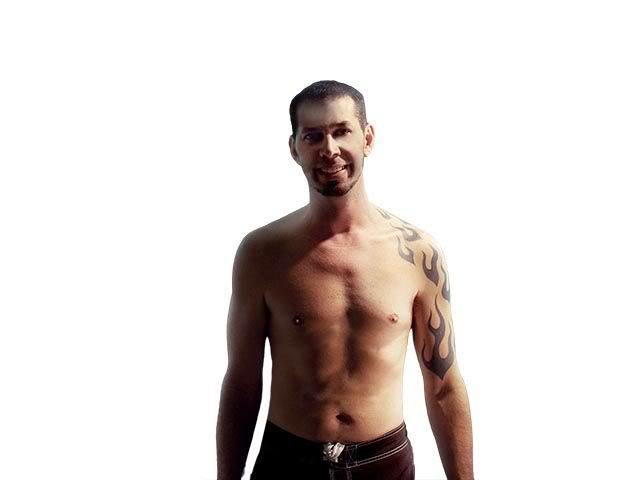 The original composite with Light Wrap plus some other lighting corrections. It looks pretty stark: 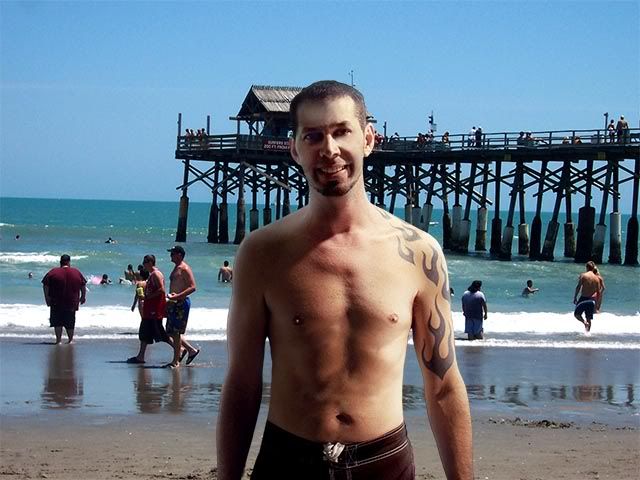 By the way, I added a "washed out" white cast to simulate the way my cell phone seems to take pics. Yes, these particular shots were only meant for the web or to be sent via cell phone. On the next, final shot, I added a white-cast gradient and a 3 px horizontal motion blur. (There were also a ton of other selections and levels/curves, dodge/burn adjustments to change the "lighting"): 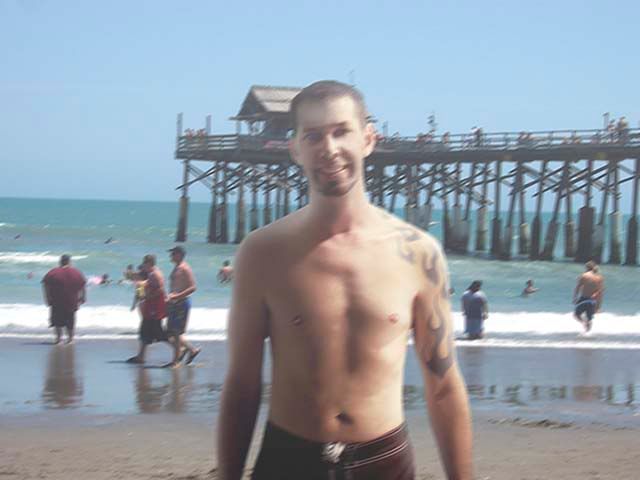 In short, I had to add a good deal of white haze, lighting corrections, and a bit of motion blur to get it to pass for "real," or at least enough for people to suspend disbelief. Any pointers or suggestions? |
|
|
|
|
|
#4 |
|
Inner Circle
Join Date: Nov 2006
Location: Tallahassee, FL
Posts: 4,100
|
My suggestion would be to take some time and read the light in the plate better.
Look at the guy on the beach far right. Notice how the sun is hitting his shoulders, but the rest of his back is in shadow. This indicates that the source is neary directly above him. The pillars of the boardwalk to the near side are nearly all in shadow. And the shadow of people walking on the beach fall only a foot or so to their left as we view the photo. In order to replicate that, you are going to need FAR more ambient light around your subject, you are going to have to get your light about 3-4 ft above his head, you are going to need to color match the lights to noon sunlight, etc. So your greenscreen doesn't sell because the light direction is wrong, the shadows are wrong, the color temp is wrong. Fixing those things will go a long way toward helping. Oh, and trying to simulate outdoors with an indoor greenscreen is the hardest thing there is.
__________________
DVX100, PMW-EX1, Canon 550D, FigRig, Dell Octocore, Avid MC4/5, MB Looks, RedCineX, Matrox MX02 mini, GTech RAID, Edirol R-4, Senn. G2 Evo, Countryman, Moles and Lowels. |
|
|
|
|
|
#5 |
|
Regular Crew
Join Date: Jul 2007
Location: Ft Myers, Florida
Posts: 65
|
I was looking more at the guys on the left. When I look at the big guy standing by the water, and the two guys walking, the shadows seem to fall slightly to the left of them. But I can see what you're saying as to the sun being a little more overhead than I was seeing it.
I'm on a bit of a shoestring budget with lighting, etc. As far as color temp, I figured that could mostly be compensated for first in ACR and then in Photoshop itself. |
|
|
|
|
|
#6 |
|
Inner Circle
Join Date: Nov 2006
Location: Tallahassee, FL
Posts: 4,100
|
That sunlight is nearly downfiring. If we thought of the positioning as a clock face, it would be between 12 and 1 and closer to 12. That's the only way to get the shadows that short on the ground. Also notice the two guys walking together. See their faces. Both are in light shadow as it faces the camera. This tells me that the sun is slightly BEHIND the subject as well as to the subject's right.
I didn't realize this was going to be processed more, so some of it can be done later. But yea, the lighting is hard to get exactly right...
__________________
DVX100, PMW-EX1, Canon 550D, FigRig, Dell Octocore, Avid MC4/5, MB Looks, RedCineX, Matrox MX02 mini, GTech RAID, Edirol R-4, Senn. G2 Evo, Countryman, Moles and Lowels. |
|
|
|
|
|
#7 |
|
Trustee
Join Date: Sep 2004
Location: Bristol, CT (Home of EPSN)
Posts: 1,192
|
Try defocusing and perhaps darkening the background. This will draw attention to the foreground subject.
|
|
|
|
|
|
#8 | |
|
Inner Circle
Join Date: Oct 2001
Location: Honolulu, HI
Posts: 2,054
|
Quote:
Perrone has it right. The lighting direction doesn't match. You could try positioning your model similar to the way the people are standing on the beach, then see if your light matches. You also have a light source coming from the left side -- you might need to position a negative reflector to absorb any light from that direction. And as mentioned, you can always fine-tune in post to get your color to match. I would suggest making sure that the white balance is as neutral as possible for this type of shot. For other scenes, you can light your model to match the background plate. But make sure your camera is set to match the color temp of the light that illuminates your green screen. I read that some compositors will have a chrome ball that's painted flat grey on one side. The chrome side is shot to record the position of any light sources. You'll see the reflection in the mirrored surface. Then the grey side is shot to record the kind of shadow being thrown: hard, soft, etc. I have to make something similar to help me with these things. I thought of something similar to a sun dial which would give me direction and quality of sunlight. Also, white, grey and black reference patches would help with setting color. Once I get past this editing crunch I'll figure out something that's effective and won't take up too much space in my bag.
__________________
Dean Sensui Exec Producer, Hawaii Goes Fishing |
|
|
|
|
|
|
#9 |
|
Regular Crew
Join Date: Jul 2007
Location: Ft Myers, Florida
Posts: 65
|
Would you say this is a fair lighing assessment?
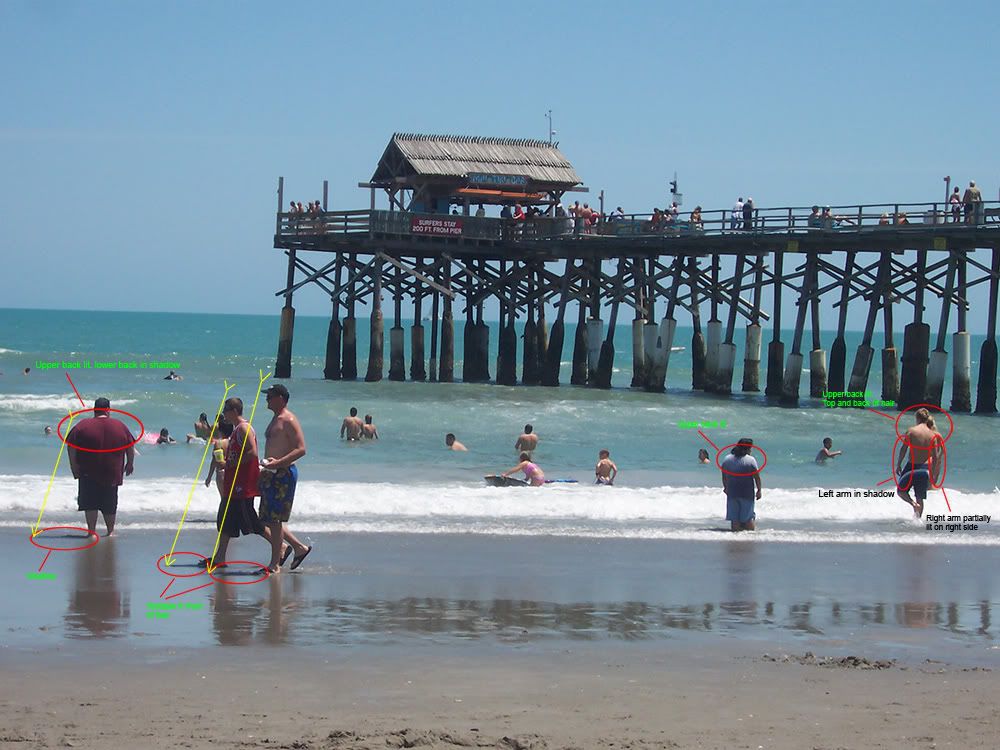
|
|
|
|
|
|
#10 |
|
Inner Circle
Join Date: Nov 2006
Location: Tallahassee, FL
Posts: 4,100
|
I'd say that's a fair assessment of the DIRECTION of the light. So what you need to do is to now assess the ratios. You have MUCH stronger shadows on your subject than we have in the plate. Also note that there is a single light source on the subjects in the plate, and at least 3 in your green screen You need to find a way to simulate 1 VERY large source at near the 1 o'clock position
__________________
DVX100, PMW-EX1, Canon 550D, FigRig, Dell Octocore, Avid MC4/5, MB Looks, RedCineX, Matrox MX02 mini, GTech RAID, Edirol R-4, Senn. G2 Evo, Countryman, Moles and Lowels. |
|
|
|
|
|
#11 |
|
Regular Crew
Join Date: Jul 2007
Location: Ft Myers, Florida
Posts: 65
|
Well I just ordered a 36 x 36" 1000 watt softbox that I can mount on my boom. Hopefully this will help in the matter. There are two interesting things about the nature of sunlight versus artificial lighting (correct me where you think I may be wrong).
1. Sunlight is coming from a point light 93 million miles away, and as the sun is something like 109 times the size of earth, all the rays striking the earth (or in this instance in our beach scene) are virtually parallel with each other, versus the rather conical light beam from a close-by spotlight, where the rays diverge outward as they travel further. Thus a person would have to have a very intense point light at a considerable distance from the subject to be something similar to the sun. 2. The intensity fall-off of artificial lighting (say a 500 watt point light) is great compared to that of the sun. With a 500 watt light, close to the head, you could easily have over 130,000 lux right at the top of the head (if the light is close) but have well less than 1000 lux down near the feet, (I just double checked that with my meter using a 500 watt light). That's a huge difference. Whereas with the sun, if you're measuring 130,000 lux at the head, you'll be reading 130,000 at the feet also. By using the 36" 1000 watt softbox I'm hoping to get the light more "parallel" over a larger area. I'm discovering that there seems to be no way to even quasi-accurately simulate the sun from a close point light regardless of it's intensity, even if it's close to the subject (I'm limited to 8' ceilings in my apartment/studio also). As far as what you are saying about the 3 light setup, if I used only one massive light in my FG shot, how would I amply light my green screen to pull the key? Although every object in the scene is potentially a light source via radiosity, I try to keep the green screen lighting as seperate (and as far) from the subject and subject lighting as possible and always use black backed umbrellas. In fact green spill is a problem I almost never have to deal with because of the separation. The light that is coming around on the left side and shoulder of the subject is from the Light Wrap feature in the Primatte keyer, which I will no longer use, or at least much more sparingly. |
|
|
|
|
|
#12 |
|
Inner Circle
Join Date: Nov 2006
Location: Tallahassee, FL
Posts: 4,100
|
Excellent Rob.
So let's talk about how to simulate the sun! :) You are correct in your assessments, so what we really need here is a minimal fall off of light intensity with the shadows being formed only by the position of the body itself. Fortunately, we don't need to fully replicate the rays of the sun to do this. Your softbox (Rifa 88 from the sound of it, will do a lovely job. However, you could easily achieve the same thing with a large bounce card or two, shooting through a large frame of diffusion, or shooting of some draped muslin that curves around your subject some. All can give a lovely light wrap and a lovely quality to light. I also think you misunderstood me in relation to your 3 lights. It appeared from the photo you posted, that light from 3 lights was hitting your subject, not just the greenscreen. You are correct that they should be lit separately. Most seem to recommend 15ft or more of a gap to eliminate spill. How far is your talent from the screen? And how far are the greenscreen lights from the talent?
__________________
DVX100, PMW-EX1, Canon 550D, FigRig, Dell Octocore, Avid MC4/5, MB Looks, RedCineX, Matrox MX02 mini, GTech RAID, Edirol R-4, Senn. G2 Evo, Countryman, Moles and Lowels. |
|
|
|
|
|
#13 |
|
Major Player
Join Date: Jan 2004
Location: Los Angeles, CA
Posts: 254
|
Rob,
Since you have a wide choice of BGs from the web and other sources, why pick one with high noon ugliness? For example, if that same BG plate was shot much earlier or much later in the day, you would have a way better starting point (in terms of lighting direction and quality) on which to base the match to your in-studio talent. Since the goal of blue/green screen compositing is to create a believable illusion, why fight this kind of lighting battle with an element that does not inherently lend itself to that process? Unless, of course, that's your only option, in which case forget what I've said. :) Ken |
|
|
|
|
|
#14 |
|
Inner Circle
Join Date: Oct 2001
Location: Honolulu, HI
Posts: 2,054
|
Rob...
The noonday sun on a cloudless day is a point source. The result is hard, crisp shadows. If you use a softbox, you'll end up with soft shadows that won't match your background plate. What you need is a studio with a very high ceiling. To minimize falloff, you'll have to place your light source high up. Brightness decreases by two stops every time you double the distance. Starting at 2 feet, the light drops off by two stops when you increase the distance to 4 feet. Then two more stops at 8 feet. So if you have your subject at 8 feet, you'd have to go 16 feet before you lose two stops of light. But at a shorter distance of 2 feet, you'd only have to go two more feet to lose two stops of light.
__________________
Dean Sensui Exec Producer, Hawaii Goes Fishing |
|
|
|
|
|
#15 |
|
Regular Crew
Join Date: Jul 2007
Location: Ft Myers, Florida
Posts: 65
|
You can make the softbox much less diffuse by using a different cover material, or not using any cover at all.
Unfortunately I'm stuck with 8' ceilings for now as I can't afford a full studio. As long as I can get the lighting about 90% or so correct when shooting, the rest is usually a breeze to fix/tweak in Photoshop. I'll still have the problem with falloff, but once again Photoshop to the rescue. |
|
|
|
| ||||||
|
||||||
| Thread Tools | Search this Thread |
|
|